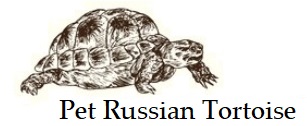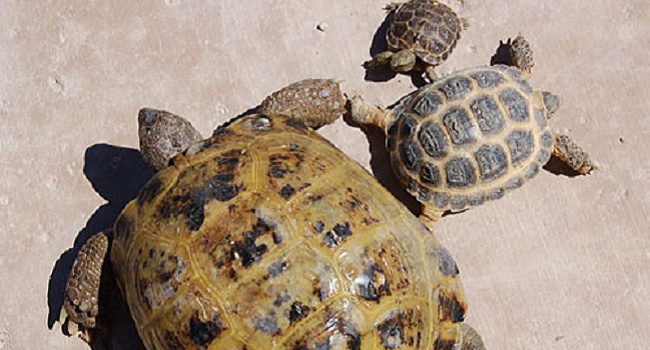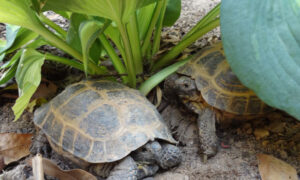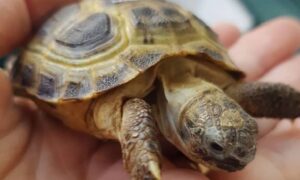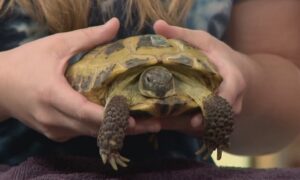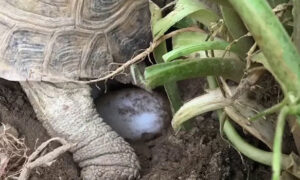Russian tortoises are a smaller species of tortoise, which is one of many reasons why they are popular pet tortoises. Because of their smaller size, Russian tortoises can be kept entirely indoors. Russian tortoise average size is 5 – 8 inches and weigh between 1 – 3 pounds.
Baby Russian Tortoise Size
Baby Russian tortoises are tiny. They hatch around 1 – 1.33 inch long.
Male VS Female Russian Tortoise Size
Female Russian tortoises grow slightly larger than male Russian tortoises. The size difference may not be significant, however females are typically larger in size.
Female tortoises are generally larger because unlike mammals and many other reptiles, a tortoise’s body is inflexible when pregnant (or gravid with eggs). The belly does not grow to accommodate the eggs. Instead female tortoises have more available space where the eggs can fill in if the tortoise becomes gravid.
Female Russian tortoises average about 6 – 10 inches. Male Russian tortoises average 5 – 8 inches.
How Long Does it Take a Russian Tortoise to Reach Full Size?
Even though Russian tortoises are a smaller tortoise species, averaging 5-8″, it can take 15 to 20 years before they reach their full growth.
It can take a Russian tortoise about 2-3 years before they average 4 inches long.
What Factors Affect Russian Tortoise Growth?
In the wild, Russian tortoises are likely slightly smaller than captive, pet Russian tortoises. In captivity, we can control habitat, diet and hibernation, all of which can factor into a tortoise’s growth.
Habitat
Captive Russian tortoises, are lucky. They have a controlled environment. Set a light source on a timer between 12 – 14 hours each day. Ensure proper temperatures with a good heat bulb, keeping the ambient temperature 70 – 80°F with a basking area between 95 – 100°F. Make sure there is a source of UV, such as a good UV tube or bulb. And make sure to clean any uneaten food and poop.
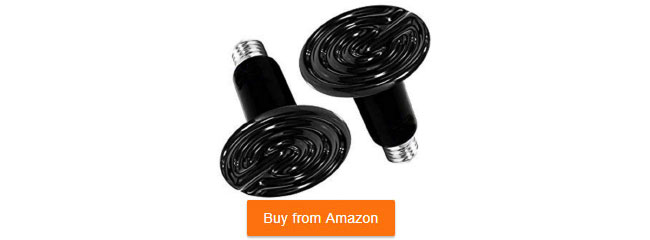
If the enclosure is too small (minimum of 2 foot x 4 foot for an indoor enclosure or 4×4 foot outdoor enclosure) or the basic husbandry requirements are not met, a Russian tortoise will suffer growth problems, as well as possible vitamin D production and metabolic bone disease.
Diet
In captivity, we control what our pet tortoises eat. Russian tortoises need a variety of weeds, grasses, leafy greens and flowers. They require a high-fiber diet. Grasses and weeds should be available to graze throughout the day. Offer greens at minimum every other day, while daily is ideal. It’s also important to supplement with calcium to prevent growth disorders.
A healthy, varied diet will ensure that the Russian tortoise grows steadily and remains healthy. A poor diet can cause stunted growth, metabolic bone disease, etc.
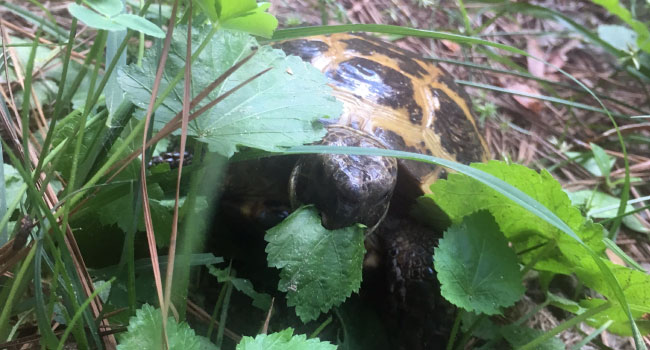
Hibernation
Wild Russian tortoises hibernate up to 5 months of the year. In captivity, you do not have to hibernate pet Russian tortoises. If you choose to hibernate your pet tortoise, it’s important to ensure that you do so safely. If you do not practice safe hibernation techniques, your tortoise may not wake up when you try to warm him back up. Hibernation is very critical, and how you hibernate a Russian tortoise can truly affect its adult size.
Overall Health and Illness
In the wild, Russian tortoises are more prone to parasites. Contaminated diet and housing is a huge factor for contracting parasites. By keeping the enclosure clean, offering healthy foods and quarantining new tortoises, you can prevent the spread of parasites in captivity.
